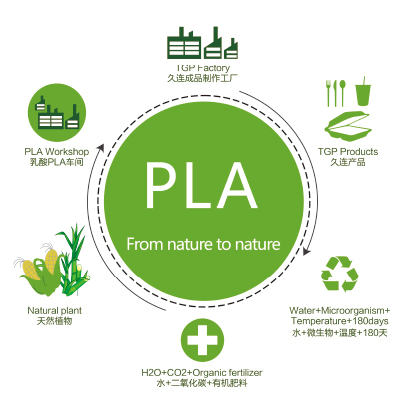PLA stands for Poly Lactic Acid. The material PLA is usually made from fermented corn sugars or sugar beets, which is then used to manufacture this type of biobased plastic. PLA plastics have similar features as traditional petroleum plastics (PS, PP and PET), but they’re considerably more eco-friendly. For example, the production of PLA uses less energy and generates 75% less greenhouse gases than the production of conventional plastics.
PLA products are sensitive to heat and therefore only suitable for cold products. PLA products can be used with cold dishes and drinks of up to 40˚C. Our CPLA products are more heat-resitant. According to the EN-13432 composting standard our PLA products are 100% biodegradable and compostable. In an industrial composting facility under optimum conditions (oxygen, moisture and heat), PLA will be fulliy composted in 8-12 weeks. Moreover, PLA is a non-toxic and is made from a natural renewable resource.
We use PLA to create tranparant cold cups, deli containers and clamshell saladboxes. PLA is also used as a coating for your coffee cups and food containers.
CPLA, Crystallized Poly Lactic Acid, is a combination of PLA (70-80%), chalk (20-30%) and other biodegradable additives.Through the crystallization of PLA our CPLA products can withstand high temperatures up to 85°C without deforming. Once crystallized, CPLA is no longer transparent, but mat white. For our black CPLA cutlery and coffee cups lids, charcoal is added to create the black colour. This does not conflict with overall composting properties of CPLA.
As CPLA is derived from PLA, it is 100% biodegradable and compostable according to the EN-13432 standard. At the end of life, PLA based products can be either recycled or composted in industrial composting facilities.
